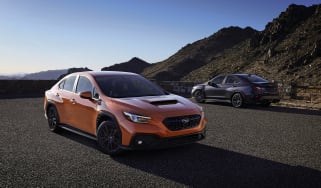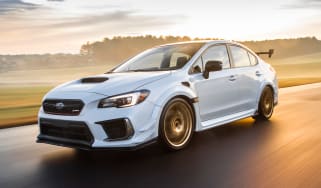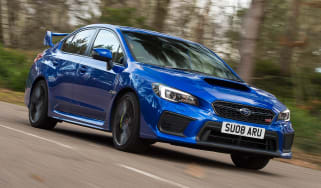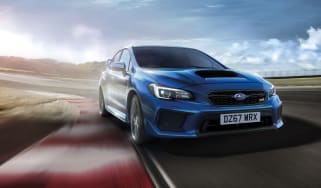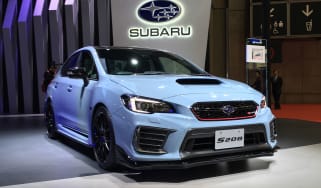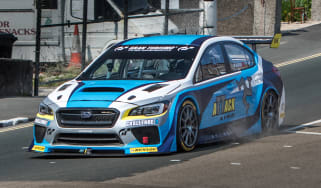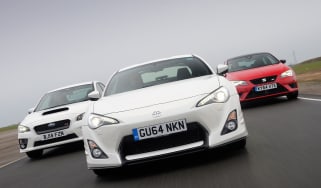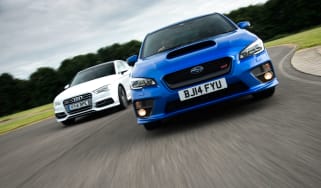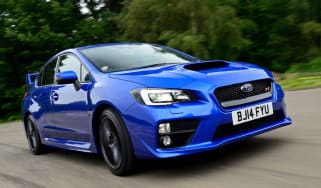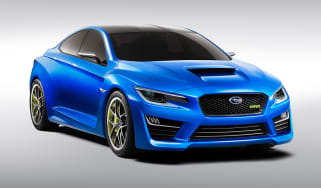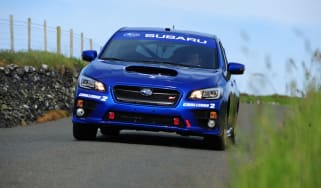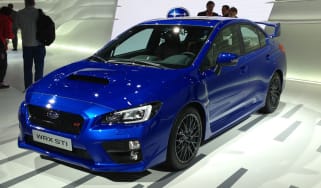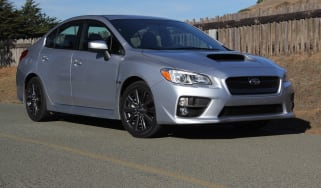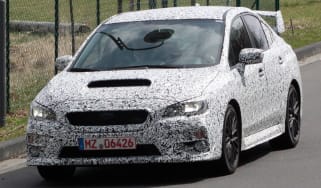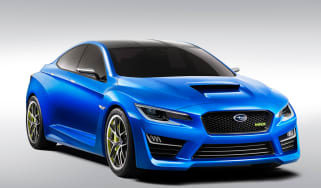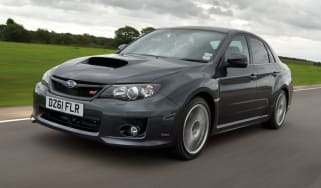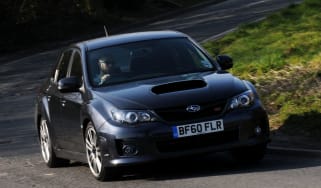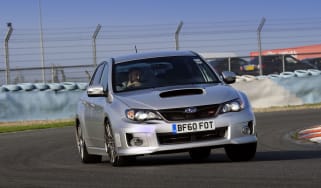Subaru WRX STi review
The Subaru WRX STi is back, but can it recapture the popularity the older models enjoyed so much?

For many people the WRX is the epitome of Subaru. Standing for World Rally Experimental - the WRX and its rallying success transformed the Subaru brand from a company famed for workhorse 4x4s loved by farmers to a firm synonymous with performance and handling. However, the market has changed and in recent years and the WRX’s shining light has waned.
The Subaru WRX STi is the latest in a long line of family friendly performance cars from the brand, and can trace its roots to the Impreza, which achieved huge success in rallying.
There have been estate, hatchback and coupé bodystyles over the years, but the current WRX sticks to the four-door saloon format made famous by the original Impreza, while the turbocharged boxer four-cylinder engine and permanent four-wheel-drive system maintain the same tradition.
While the Impreza WRX STi has a loyal following, the arrival of a new Impreza means it's not long for this world - and Subaru has released a limited Final Edition version to celebrate its passing.
Engines, performance and drive
Fire up the Subaru’s four-cylinder boxer turbo, and you get a familiar offbeat burble from under the bonnet, while the car gently vibrates to the tune of the engine. You have to manhandle the WRX STi to get it going, due to the heavy gearbox, clutch and steering, although once on the move it’s easy to live with.
More reviews
If you want to get close to Subaru’s claimed 0-62mph time of 5.2 seconds, you need to be pretty brutal with the clutch, yet we managed 0-60mph in 5.6 seconds with a bit of mechanical sympathy in our tests.
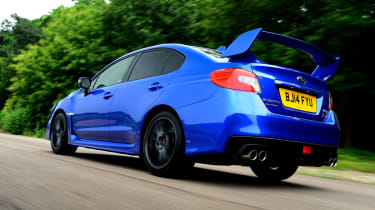
In corners, the Subaru’s permanent 4WD system comes to the fore. It delivers tremendous amounts of grip, even in wet conditions, and gives you confidence to push the car hard, even on the twistiest roads. Yet the WRX demands precision if you want to get the best out of it. Approach corners too fast and the nose will wash wide.
However, take a more measured approach and the STi turns in sharply, while the rear moves sideways a fraction, helping straighten the car and maximise the all-wheel-drive traction on the exit of a corner. Only the steering gives cause for concern, as its meaty low-speed weighting gives way to a light and vague feel as you go faster.
Unfortunately, the Subaru’s ability comes at the expense of comfort. The stiff suspension sends bumps into the cabin, while engine noise at low speed is only surpassed by tyre roar on the motorway. Subaru fans will say this is part of the WRX STi’s character, but the Leon is just as capable on country roads, yet you wouldn’t think twice about taking it on a longer journey.
The Final Edition model is no faster than the standard car, but comes with a completely electronic, rather than an electro-mechanical, centre differential, allowing you to tune the aggressiveness of the diff. Subaru has also fitted the Final Edition with more potent, six-pot Brembo brakes, new 19-inch alloys and tweaked damping.
MPG, CO2 and Running Costs
If you’re going to own and run a WRX then you’ll need to stomach some pretty hefty running costs. For starters, if you choose one as a company car, emissions of 242g/km place it in the 35 per cent tax bracket meaning near £4,000 tax bills for a higher-rate earner.
Depreciation and insurance will cost you a lot, too, while you’ll have to pay £475 a year for your tax disc, and lots of money on fuel. Having said that, excluding any track driving we recorded a surprisingly frugal 26.4 but with no stop-start you’ll struggle to match that in town, while keen driving will cost you at the pumps.
The WRX needs servicing every 10,000 miles and while Subaru dealers don’t have prices for the new WRX yet, past experience suggests servicing won’t be cheap, although the firm’s dealers rank highly in Driver Power, so you should at least get good service.
However, unlike the rest of the range, which comes with a five-year warranty, you only get three years/ 60,000 miles of coverage on the WRX.
Interior, design and technology
Just looking at the Subaru WRX STi lets you know exactly what you’re in for when you get behind the wheel. The four-door body has a similar silhouette to one-time arch rival the Mitsubishi Evo X, with a bluff nose, functional bonnet scoop, stubby rear end and huge rear wing all shouting about its rally car heritage.
Up front, there’s a gaping grille and a trio of air intakes in the front bumper, while the C-shaped daytime running lights add some class. Blistered wheelarches house dark grey 18-inch alloys, although they do look on the small side when compared to some of the larger offerings on rival performance cars.
At the back there’s a black plastic diffuser and two pairs of exhaust pipes, just in case the other racy add-ons don’t scream road-racer enough for you.
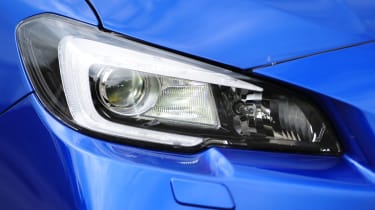
While the Subaru looks the part, build quality could be better. There’s a tinny feel to the doors when they close, while the vast rear wing wobbles disconcertingly when the bootlid is slammed shut.
Climb inside, and the Subaru pays homage to its ancestors with a cabin that feels rather old fashioned. There’s nothing wrong with how it’s built; it’s just that the hard plastics and shiny switchgear look dated.
The stereo has a dot-matrix display, while the screen on top of the dash which displays trip info and torque distribution is reminiscent of a nineties computer game. The diff control switch is exactly the same as the one from the last Impreza WRX, too, and the pink STi lettering on the dash adds another retro touch.
Practicality, comfort and boot space
Open the Subaru’s boot, and you’re greeted by a 460-litre space. There’s a high floor, thanks to the 4WD running gear underneath, while the narrow saloon boot opening means it’s harder to access than hot hatch rivals.
A four-door layout swings practicality back in the WRX STi’s favour, and a long wheelbase means there’s more legroom in the back, too. The seats are finished in leather and Alcantara, and add a sporty touch.
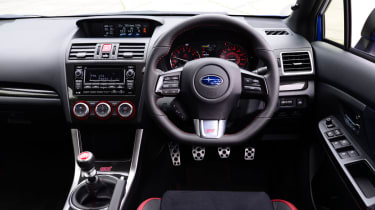
Up front, there’s reach and rake adjustment for the steering wheel and a wide range of seat adjustment, too. Rear visibility is blocked a little by the large rear wing, although Subaru doesn’t offer rear parking sensors or a camera as options.
Reliability and Safety
Like Toyota, Subaru has a first-class reputation for building cars that are strong and durable. The WRX STi uses technology that can trace its heritage back to Subaru’s world rally cars, so it should prove robust and able to stand up to the rigours of hard use, especially if you plan to take it on track days. And you can expect first-class service from Subaru, too, as the company finished fourth out of 27 car makers in our Driver Power 2017 brand survey.
The WRX STi features seven airbags, while the four-wheel-drive system adds confidence in wet weather. It uses advanced electronics and a mechanical centre diff to distribute power, so the Subaru shouldn’t face too much trouble in poor conditions.
When it comes to safety the WRX comes with side, curtain and a knee airbag, plus Isofix, rear child locks and a full complement of rear seatbelts and headrests. Hill hold and stability control are standard. You also get a Thatcham approved alarm and immobilizer.





